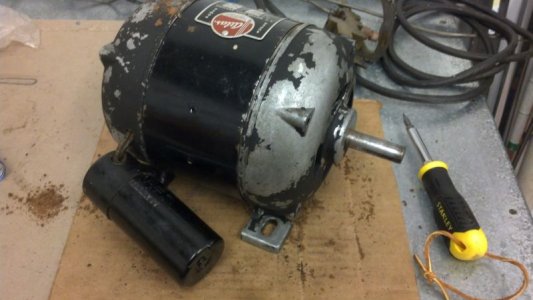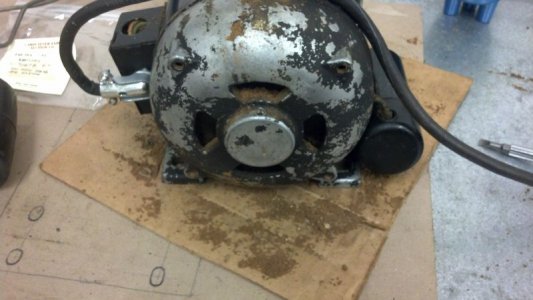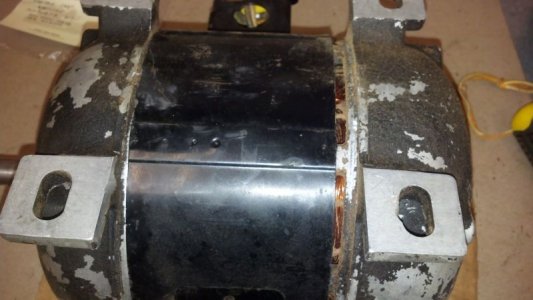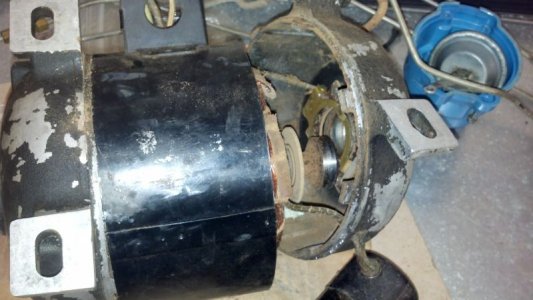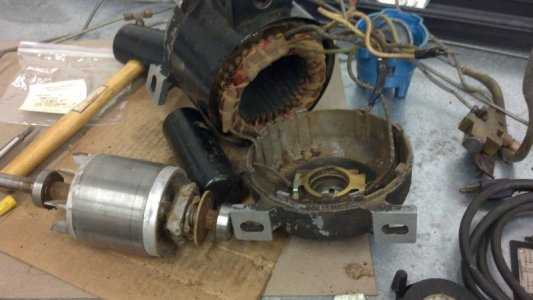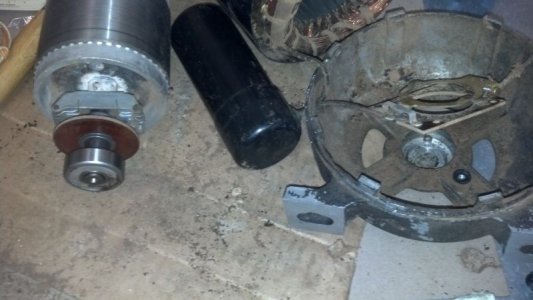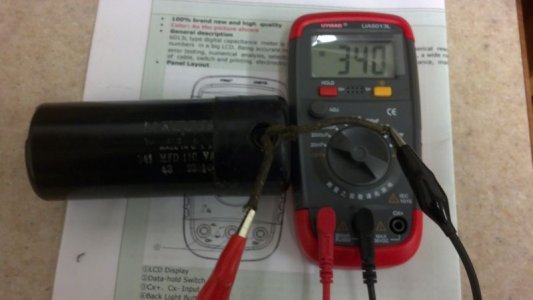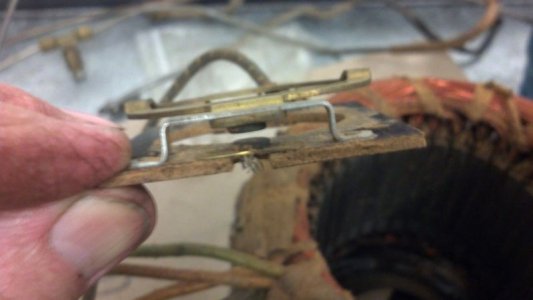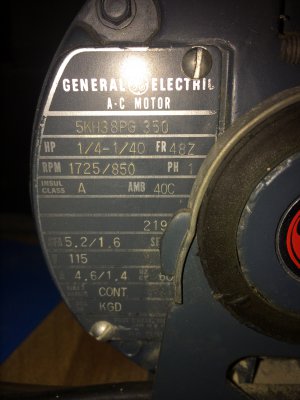Well, it's time to finish up this project. I had to work on it part time so it took a little while to complete all the self-imposed tasks, since there wasn't a manual....
I got the old bearings off using a gear puller. It helps to heat them up a bit; I held the rotor over a kerosene stove to get the bearings hot to the touch.
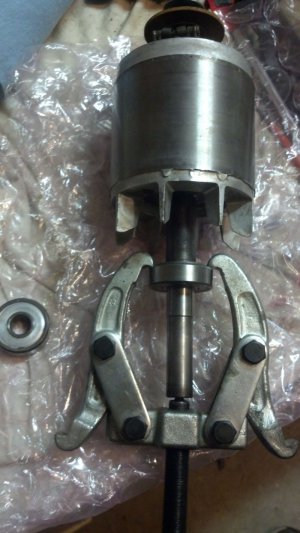
I looked up the bearings and got two Nachi replacement bearings...both are different; the motor shaft end has the larger bearing.
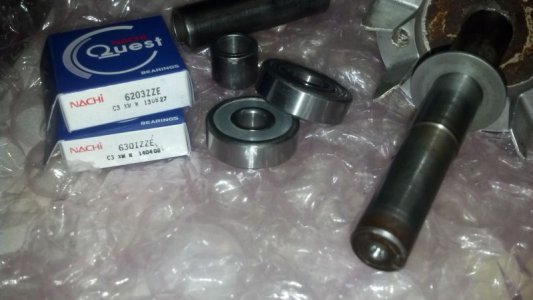
To get the bearings on, I heated them both up (250 degrees F) in Wifey's oven (she was gone for the weekend).
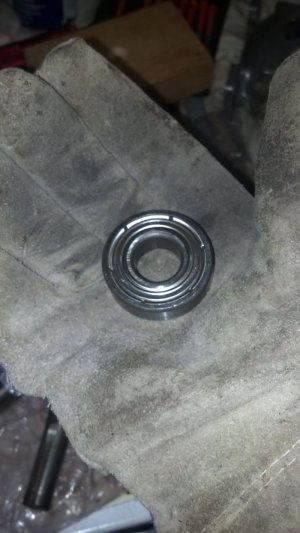
I didn't have a shop press, so I devised another way to get the bearings on without destroying them. I got a block of wood and drilled to receiving holes for the shaft ends.
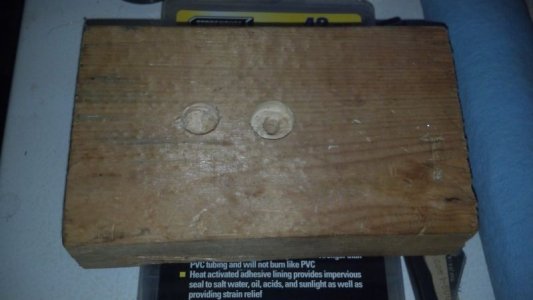
Since the small end of the shaft didn't extend past the width of the bearing, I decided to put the larger bearing on first, then turn the rotor over and put the second one on. Once the bearings were heated up, I put a washer between them and a pipe/tubing sleeve; the end of the pipe and washer were covered with duct tape for cushioning.
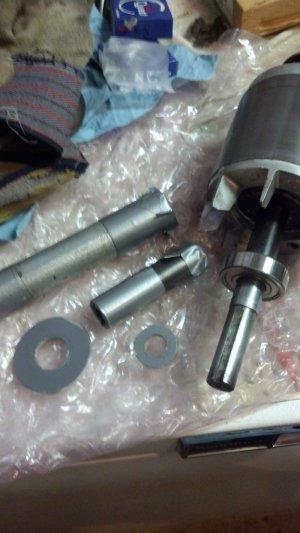
Once everything was in place,
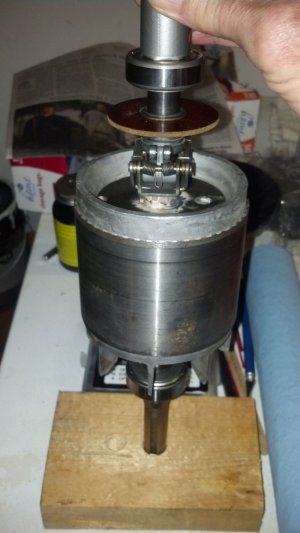
I tapped the bearings home with light blows from a nostalgic hammer...
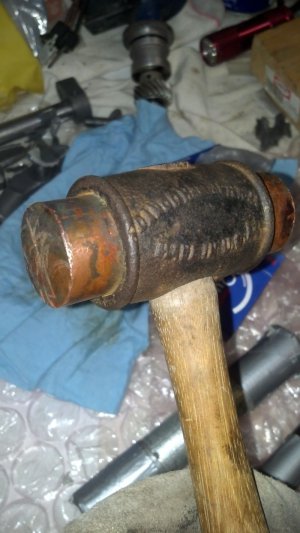
After the bearings were on, I painted all the parts.
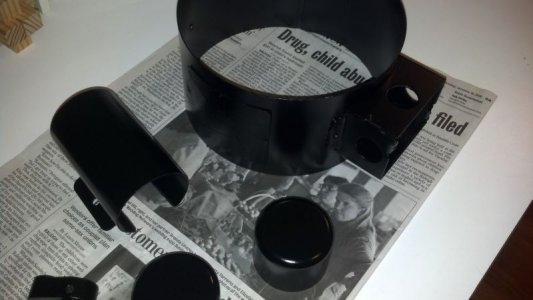
The housing ends looked pretty good unpainted,
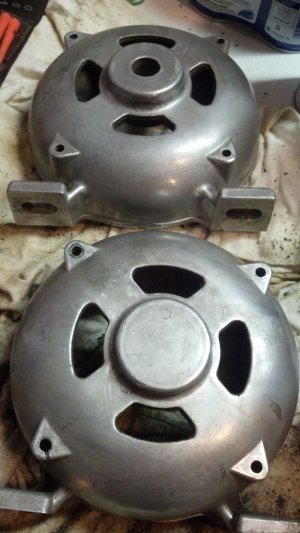
but I thought the 'wrinkle effect' might keep the bearings cooler with the increased surface area, so I repainted them.
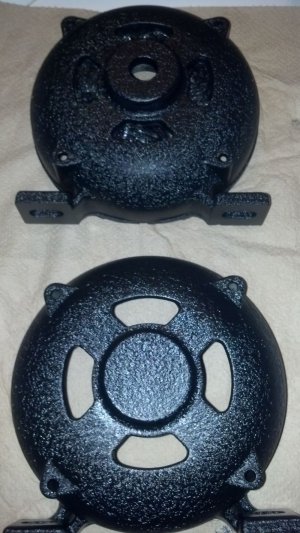
Before reassembly, I checked the capacitor wiring...one side was loose and had to be re-soldered.
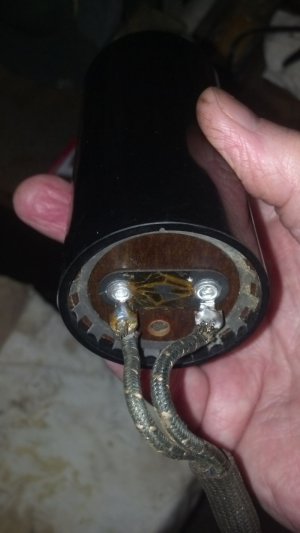
Reassembly goes easier by stacking components together in the vertical plane,
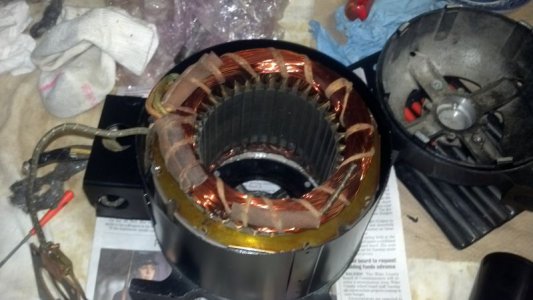
It also helps to have some wood blocks to raise the housing for the motor shaft.
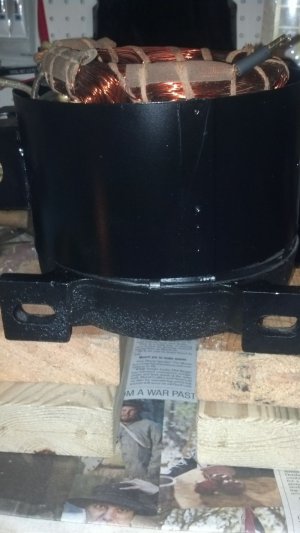
Then the rotor goes in...
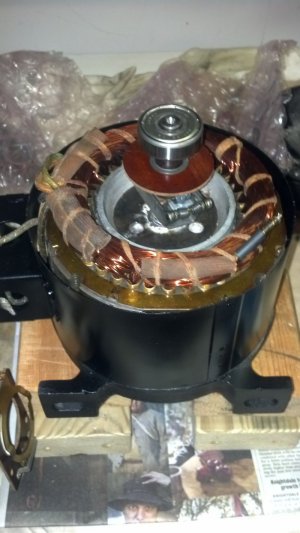
At this point some wiring connections need to be re-made with the capacitor and centrifugal contactor. Once this is done, I put the other housing end on and tapped it home. The connecting rods then go in and get tightened. Once this is done, the motor is largely complete
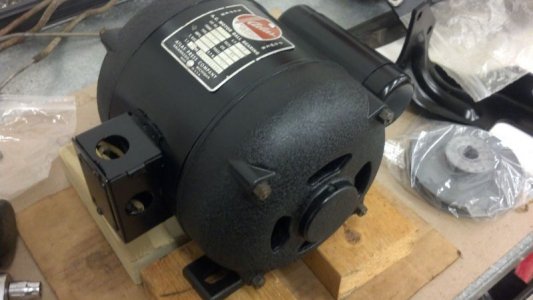
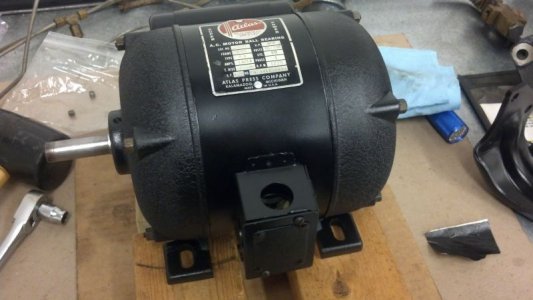
And now it's ready for the 'smoke test'...
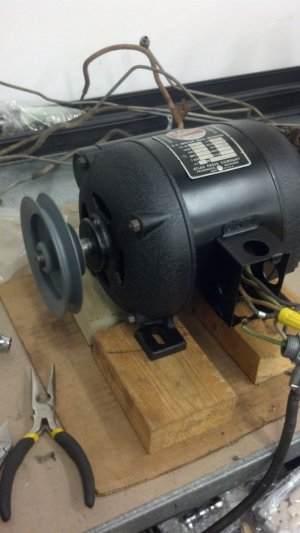
The finished motor started and ran 'like a sewin' machine'....but backwards. Switching the two capacitor leads reversed the start direction. Now that this part of my lathe rebuild is complete, installation will have to wait until the rest of the machine is ready for power. Hope you enjoyed the adventure!
Lou O.


















